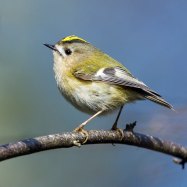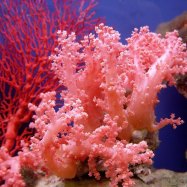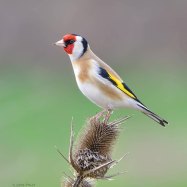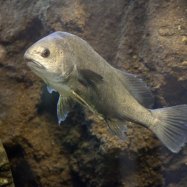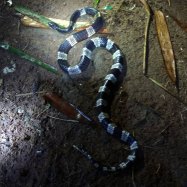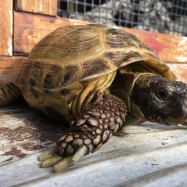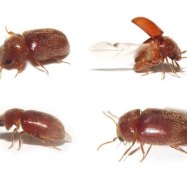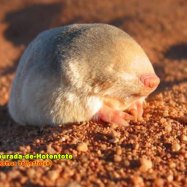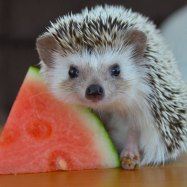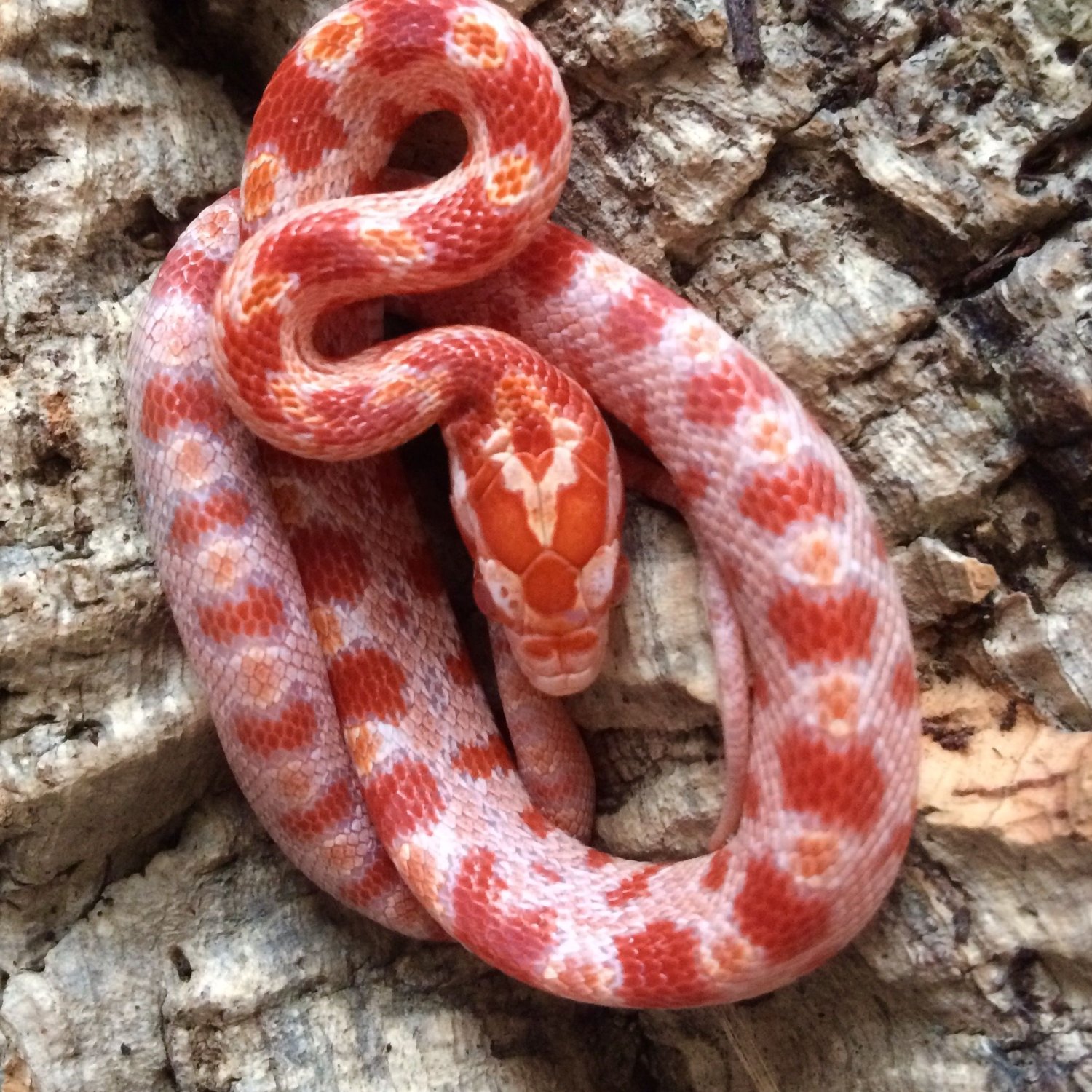
Corn Snake
3 to 5 feet
Corn snakes are a popular pet choice for reptile lovers due to their manageable size and beautiful patterns. Originating from the eastern and southeastern states of the US, these non-venomous colubrids can grow between 3 to 5 feet in length. Their slender and cylindrical body shape allows them to move easily through their natural habitat, making them excellent hunters. Consider adopting a Corn Snake and see for yourself why they are such a beloved reptile companion.
Animal Details Summary:
Common Name: Corn Snake
Kingdom: Animalia
Habitat: Terrestrial
The Colorful and Fascinating Corn Snake: A Native of North America
The world of reptiles is full of unique and fascinating creatures, and one of the most popular among them is the corn snake. With its striking appearance and easy-going nature, the corn snake has become a beloved pet among reptile lovers. But did you know that this slithering beauty is a native of North America?Scientifically known as Pantherophis guttatus, the corn snake shares its common name with its natural habitat – cornfields. It is also often referred to as the red rat snake due to its love for hunting rodents Corn Snake. This member of the reptile family is classified under the kingdom Animalia, phylum Chordata, and class Reptilia. It belongs to the order Squamata and the family Colubridae, making it a distant cousin of other popular snakes like the garter snake and the king snake.
Appearance and Coloration
One of the most striking features of the corn snake is its varied coloration. They come in a wide range of colors and patterns, making them incredibly attractive. The most common colors seen in corn snakes are shades of orange, red, and brown, often with a pattern of black and white markings. In captivity, selective breeding has led to the development of even more vibrant and unique color variations, such as lavender, albino, and even blue.In the wild, corn snakes adapt to their surroundings and can have camouflage that helps them blend in with their environment. For instance, corn snakes living in areas with red soil may have a reddish-brown color, while those living in sandy regions may have a slightly lighter shade. This color variation is what makes each corn snake truly unique Crab Eating Macaque.
Anatomy and Size
Corn snakes have a slender and cylindrical body, which allows them to move quickly and smoothly on land. They have a long, narrow head with a slightly pointed and elongated snout. This shape helps them catch and swallow their prey easily. Their eyes are on either side of their head, giving them a wider field of vision to spot potential meals.The average length of a corn snake is between 3 to 5 feet, with the males being slightly longer than the females. However, corn snakes in captivity can grow even larger, sometimes reaching lengths of up to 6 feet. They have smooth and shiny scales that help them glide effortlessly through the underbrush while hunting for prey.
Habitat and Geographical Distribution
Corn snakes are a terrestrial species, meaning that they live mainly on land. In the wild, they are found in various environments, including open fields, rocky areas, and woodlands. Their adaptability allows them to thrive in different climates, making them one of the most widespread snakes in North America. They are predominantly found in the eastern and southeastern regions of the United States, where they can easily camouflage themselves in the cornfields – hence their name.While corn snakes are often found in the wild, people have taken a keen interest in keeping them as pets. Due to this, they can also be found in captivity, living happily in terrariums as part of a human family.
Feeding and Nutrition
As carnivorous creatures, the primary diet of corn snakes is rodents, including mice, rats, and even smaller snakes. In the wild, they are skilled hunters, using their excellent sense of smell and sight to catch their prey. They have teeth that curve backward, which helps them keep a firm grip on their meal.In captivity, corn snakes can thrive on a diet of frozen and thawed rodents, as well as commercially available snake food. It is important to ensure that the prey items are appropriately sized for the snake, as overfeeding can lead to obesity and other health issues.
Behavior and Temperament
Corn snakes are known for their friendly and docile nature, making them a popular pet among reptile enthusiasts. They are not known to be aggressive towards humans and are generally quite easy to handle. However, like all creatures, they may bite when they feel threatened or scared. But with proper handling and care, corn snakes can become quite comfortable and even enjoy interaction with their owners.One interesting behavior of corn snakes is their ability to release a musky scent when under distress. This odor is not harmful, but it can be unpleasant for humans. However, it is a defense mechanism that helps them in the wild, where it can deter potential predators.
Conservation Status
Corn snakes are not listed as an endangered species. However, their natural habitats are being threatened due to urbanization and human activities. Additionally, they are sometimes also killed out of fear or misunderstanding, despite being mostly harmless. Organizations like the Corn Snake Conservation Initiative are working towards educating people about the importance and conservation of these beautiful creatures.Choosing a Corn Snake as a Pet
If you are considering getting a corn snake as a pet, it is essential to research and understand their care requirements. Firstly, it is crucial to ensure that the snake is captive bred and not taken from the wild. Wild-caught corn snakes may have underlying health issues and can also contribute to the decline of their population in their natural habitats.When bringing a corn snake home, you will need a suitable terrarium with the correct temperature and humidity levels. A proper diet and regular veterinary check-ups are also necessary for their well-being.
In Conclusion
The corn snake is truly a remarkable creature, with its striking appearance and easy-going nature. They have adapted to thrive in various environments, making them a widespread species in North America. While they may seem intimidating to some, they make great pets for those who are willing to provide them with the care and attention they need. So, the next time you see a corn snake slithering through a cornfield, take a moment to appreciate its beauty and importance in nature.

Corn Snake
Animal Details Corn Snake - Scientific Name: Pantherophis guttatus
- Category: Animals C
- Scientific Name: Pantherophis guttatus
- Common Name: Corn Snake
- Kingdom: Animalia
- Phylum: Chordata
- Class: Reptilia
- Order: Squamata
- Family: Colubridae
- Habitat: Terrestrial
- Feeding Method: Carnivorous
- Geographical Distribution: North America
- Country of Origin: United States
- Location: Eastern and southeastern United States
- Animal Coloration: Various colors and patterns, typically orange, red, and brown with black and white markings
- Body Shape: Slender and cylindrical
- Length: 3 to 5 feet
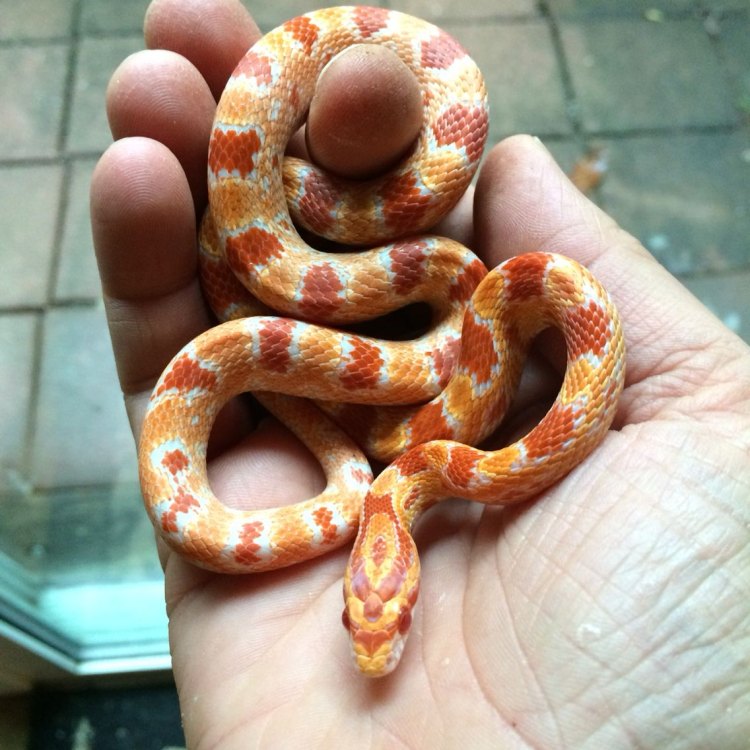
Corn Snake
- Adult Size: 3.5 to 5 feet
- Average Lifespan: Around 15 to 20 years
- Reproduction: Sexual
- Reproductive Behavior: Oviparous (egg-laying), females lay 10 to 30 eggs
- Sound or Call: Corn snakes are not known for making sounds or calls
- Migration Pattern: Non-migratory
- Social Groups: Solitary
- Behavior: Nocturnal, secretive, and non-aggressive
- Threats: Habitat loss and fragmentation, illegal collection for the pet trade
- Conservation Status: Least Concern
- Impact on Ecosystem: Corn snakes help control rodent populations
- Human Use: Popular pet snake, used in the reptile trade
- Distinctive Features: Smooth scales, vibrant colors, checkered belly scales
- Interesting Facts: Corn snakes are often confused with copperheads due to their similar coloration, but they are harmless
- Predator: Birds of prey, larger snakes, mammals
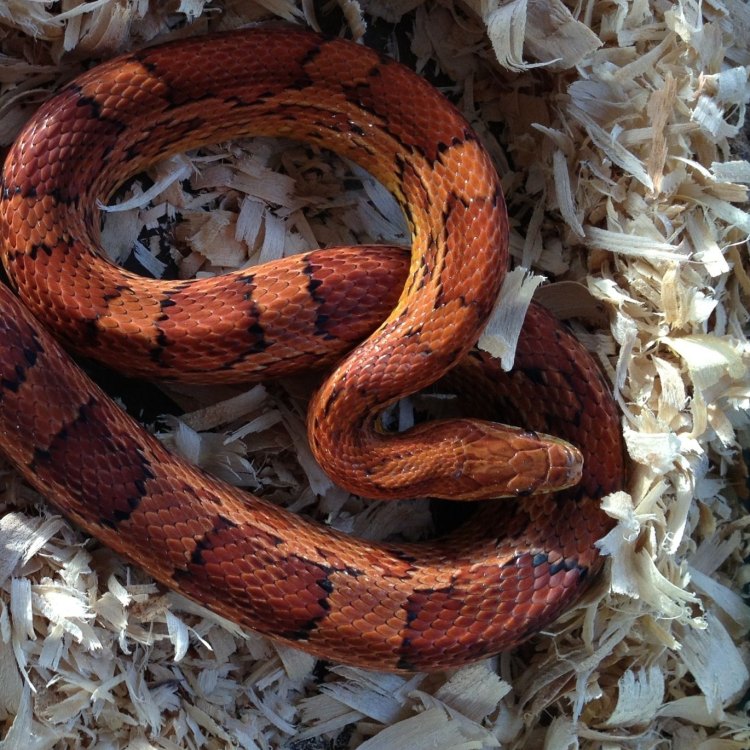
Pantherophis guttatus
The Fascinating World of Corn Snakes: A Closer Look at These Vibrant Creatures
When we think of snakes, we often imagine venomous and intimidating creatures. But have you ever heard of the friendly and colorful corn snake? While they may not be as popular as other snakes, these creatures have a unique and fascinating story to tell.Corn snakes, also known as red rat snakes, are native to the southeastern United States and parts of Mexico. They are a species of non-venomous colubrid snake, meaning they are not harmful to humans PeaceOfAnimals.Com. But don't let their harmless nature fool you, as they have many other distinct characteristics that make them stand out in the wild.
Let's take a closer look at the unique features of these vibrant creatures, their behavior, impact on the ecosystem, and the threats they may face.
The Perfect Size and Long Lifespan
Corn snakes can reach an adult size of 3.5 to 5 feet, making them a relatively small-sized snake. This size makes them perfect for both experienced and novice snake owners. They are slender and agile, with smooth scales that make them appear glossy.These elegant snakes also have a long lifespan, with an average of 15 to 20 years in captivity. In the wild, their lifespan may be shorter due to various factors such as predation and environmental threats. However, with proper care and nutrition, these snakes can live a long and healthy life in captivity Cow.
Reproduction and Unique Reproductive Behavior
Like many other reptiles, corn snakes reproduce sexually. The breeding season for these snakes is in the spring, with mating occurring between March and May. During this time, male corn snakes will search for females and engage in courtship behavior.The most distinctive feature of the corn snake's reproductive behavior is its oviparous nature. This means that females lay eggs rather than giving birth to live young. The number of eggs laid can range from 10 to 30, depending on the size and health of the female. These eggs are then incubated for around 60 days, after which the tiny hatchlings emerge.
Unique Appearance and Interesting Facts
One of the most striking features of corn snakes is their vibrant colors and patterns. These snakes have a variety of colors, ranging from red, orange, brown, black, and yellow. Their smooth scales also have a glossy appearance, making them stand out in the wild.Interestingly, corn snakes are often mistaken for copperheads due to their similar coloration. However, these two species are very different, with the corn snake being harmless while the copperhead is venomous.
Corn snakes also have a unique checkered pattern on their belly scales, which gives them their scientific name "Pantherophis guttatus," translated as "spotted like a panther."
Nocturnal, Solitary, and Non-Aggressive Behavior
Corn snakes are primarily nocturnal, meaning they are most active at night. During the day, they prefer to hide and stay out of sight, making them elusive and secretive creatures. They are also solitary animals, preferring to live and hunt alone.Despite their intimidating reputation, corn snakes are non-aggressive and usually flee when threatened. When provoked, they may hiss or strike, but this is rare. The majority of bites from corn snakes occur due to mishandling or mistaking them for another species.
The Role of Corn Snakes in the Ecosystem
Corn snakes play a vital role in their ecosystem as they control rodent populations. These snakes are opportunistic predators, and their diet consists mainly of rats, mice, and other small rodents. By keeping these populations in check, corn snakes help maintain a balance in their ecosystem.Threats and Conservation Status
Like many other reptiles, corn snakes face threats to their survival. The most significant threat they face is habitat loss and fragmentation due to human development. As their natural habitat is destroyed and fragmented, their chances of survival decrease.Corn snakes are also collected illegally for the pet trade, which has a significant impact on their wild populations. While they are relatively easy to care for in captivity, it is essential to purchase them from reputable breeders to avoid contributing to the illegal trade.
Fortunately, corn snakes are currently listed as "Least Concern" on the IUCN Red List. However, it is crucial to continue monitoring their populations and taking measures to protect their habitats to ensure their survival in the long run.
Human Use: Popular Pet Snake
Corn snakes may not be as popular as other snake species, but they have still gained traction as a popular pet. They are low maintenance and have a manageable size, making them suitable for first-time snake owners.However, it is essential to research and understand their needs before deciding to keep them as pets. These snakes require specific temperatures, humidity levels, and dietary requirements to thrive in captivity.
Conclusion
Corn snakes may not be as well-known as other snake species, but they are undoubtedly a fascinating and unique creature. With their striking appearance, non-aggressive nature, and important role in their ecosystem, these snakes deserve more appreciation and recognition.It is crucial to protect and preserve their natural habitats to ensure their survival for future generations. As humans, we must also respect their space and not contribute to the illegal pet trade. Let's continue to admire these beautiful creatures from a distance and appreciate their contribution to our ecosystem.
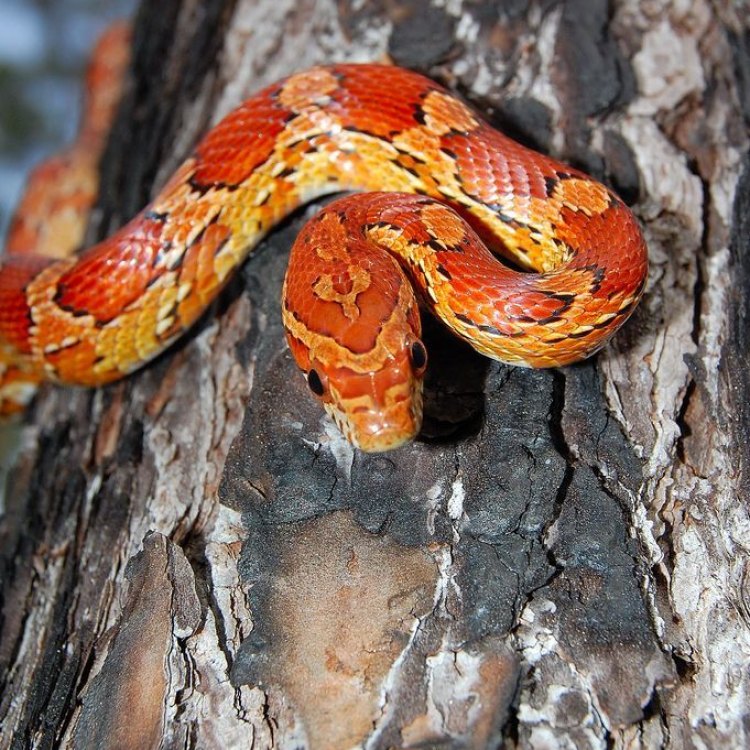
The Colorful and Fascinating Corn Snake: A Native of North America
Disclaimer: The content provided is for informational purposes only. We cannot guarantee the accuracy of the information on this page 100%. All information provided here may change without prior notice.


